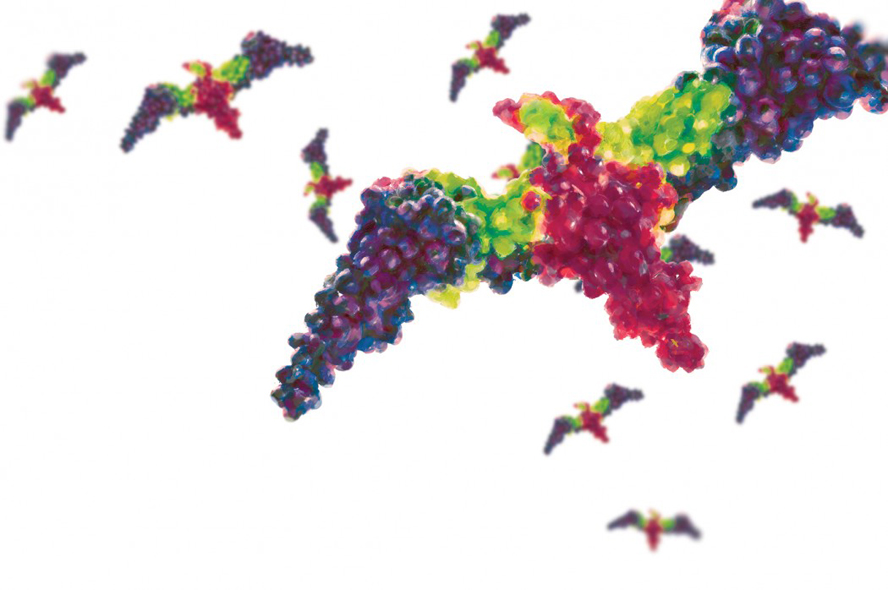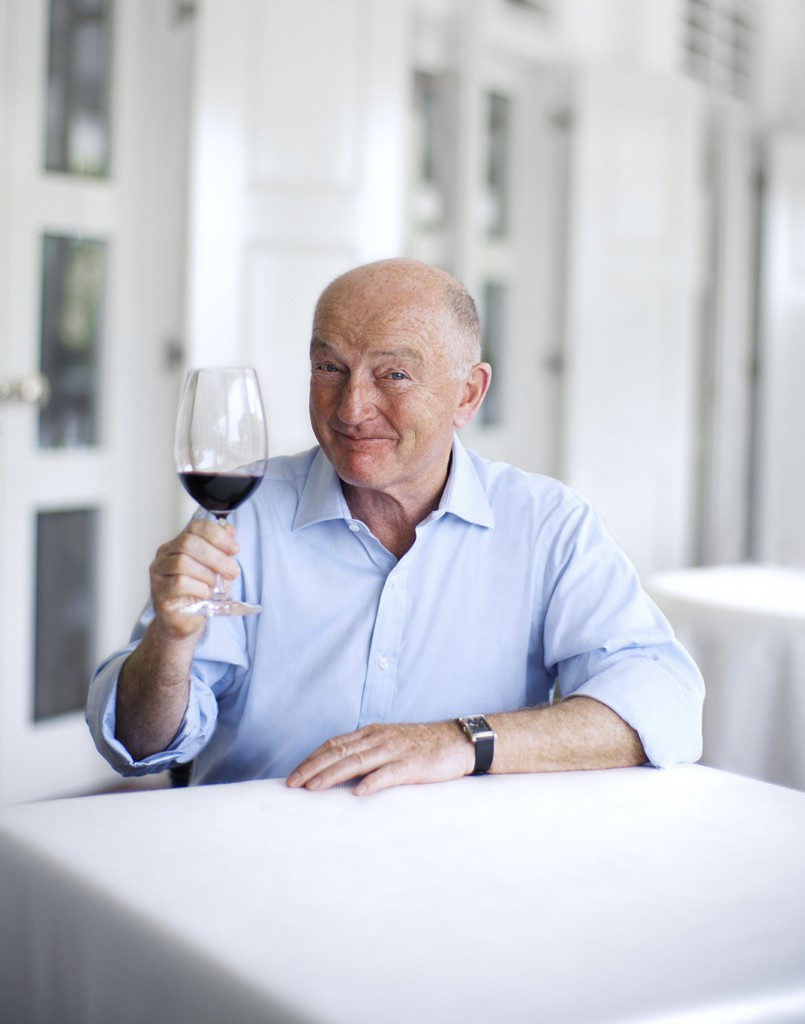Giving the Wine Some Air
A wild party is needed to create wine. One drop of fermenting grape juice may have 5 million yeast cells. When the conditions are right in the vat, they start to sway. They chomp through the grape sugars, indulge in frantic reproduction, then sink to a glorious death, leaving wine as their hangover.
Wild yeast occurs practically everywhere, and, as anyone who has made sourdough bread from scratch would know, it can be unpredictable. In wine, these yeasts impart complexity and sometimes a slightly ‘feral’ quality that adds intrigue. Wine flavours, however, will taste quite different in a pressurised cabin, where these Bacchanalian beasties may be best replaced by the ‘cultured’ yeasts whose behaviour is more predictable. The best airlines employ internationally renowned specialists, such as Oz Clarke or Bob Campbell, to help them find the balance between bland and brash in the wines they serve.
Some airlines take wine service more seriously than others, and surprisingly it is not always airlines from wine producing countries that have the best selection and service. On a recent long flight with the national airline of a classic wine country, red was the only colour available, served from 187ml bottles. When I queried the lack of selection, I was assured that they did actually carry “both wines.”
Wine service is a key distinguishing feature of airline market positioning, especially for business class, so the stakes are high. Airlines on which I have personally experienced consistently good, even remarkable wine service, include Singapore Airlines, Air New Zealand and Qantas. It may seem a small thing, but the service ethos of all three is illustrated by the pouring of wine from the bottle, rather than the single serve piccolo.
If a passenger is lucky enough to fly first class, the sky really is the limit, with Chateau Lynch Bages and Champagne Krug served on Cathay Pacific. At the end of last year, Emirates announced they had spent US$500 million on wine over the last decade, much of this en primeur — buying in advance of release. They own a cellar in Burgundy which stockpiles and ages wines, with evidently well over a million bottles. Emirates president Sir Tim Clark believes that “wine is an experience,” and draws parallels between the experience created onboard with that of fine dining restaurants.
Air New Zealand has headlined its positioning through ongoing sponsorship of the eponymous country’s highest profile wine awards. “The airline is the largest single server of New Zealand wines,” says spokesperson Kelly Kilgour. This entails approximately 6.5 million glasses served to customers each year. For Air New Zealand, this is “a relationship that extends well beyond the inflight service,” with the close association between the airline and official industry organisation New Zealand Winegrowers spanning decades. The partnership goes beyond the journey itself, with the aim of promoting New Zealand as a wine tourism destination.
Singapore Airlines recently took the serious step of commissioning Oz Clarke to help choose its wines, and work in sessions with sommeliers and crew. He was impressed that, even on his first flights in the new consultant capacity, he encountered good wine knowledge in the cabin crew. “Singapore is a fantastic wine drinking city… There’s a fairly good chance that quite a lot of the people who work in the cabin will like wine as well. If I’m on a flight which is not too busy, I manage to go up to the galley and chat about wines — even in the middle of the night.” He quickly points out, however, that these days crew do not partake in flight.
My own recent experience showed me that Clarke has a definite task ahead of him, even on Singapore Airlines. The first thing cabin crew need to know, he says, is that there are sharper and softer styles of wine, and terminology to discuss this. Crew “need the ability to talk about sauvignon blanc as being fruitier, sharper and fresher and waking you up a little bit, whereas a chardonnay is more likely to be rounder, gentler and mellower.” Similarly, “a cabernet sauvignon is likely to be quite firm, a chewy kind of red wine, while a pinot noir is lighter and gentler, with soft, velvety flavours.”
Should we even imbibe in flight at all? I considered this momentarily as I toyed with a 2006 Taittinger served pre take-off, thanks to Clarke’s wonderful palate. Alcohol has long been discouraged in the air, mostly because of the already-problematic dehydrating environment. Alcohol will dry one out (it’s a dehydrating diuretic), so it is important to keep up the water intake. Some airlines will stock passengers up with water bottles, even in economy, while others appear to have hydrophobic crew.
If we partake, how different can we expect wines to taste at 9000 metres? The in-flight environment can have a surprisingly dramatic impact on our experience of wine. Noise is a major factor: Clarke notes that “One forgets how noisy it is in a plane.” Scientific research suggests that background noise can affect the tongue’s ability to detect sweet and salty characters. I recently popped on the amazingly effective noise-cancelling headphones in Singapore Airlines’ business class, and could swear that the flavour of my New Zealand sauvignon blanc ascended.
Nerves can also make a difference to taste, and even frequent fliers are affected, says Clarke: “Subliminally, people are in a different state of mind from what they are on the ground.” Dryness, too, has an effect. Clarke explains that even with the best air management systems in the world, recycled air will produce nasal dryness, meaning we “lose the ability to appreciate nuances.” The solution? “It’s important to try and find wines where fruit is to the fore.” Acidity is also preferred over tannin in selecting inflight wines, he says. “Dry, tannic wines are some of the least attractive to have in the air, as well as over-oaked wines.” Their heaviness, he says reduces “the pleasure measure.”
Master of Wine Bob Campbell was invited by an airline to compare wines in flight and on terra firma. He decided that red wines taste more tannic at altitude, because our ability to salivate in a dry atmosphere is lessened. This means that the proteins that we usually produce to surround and tame tannin molecules are less readily available. Campbell therefore concurs with Clarke, recommending “more intense, deep and berry-like wines,” but suggesting avoiding light, fresh and acidic wines. Research on flier choice backs these ideas up, suggesting that more intensely flavoured wines are likely to be the popular winners onboard. Less intense wines may appear more alcoholic and acidic, while our sensitivity to bitterness may be heightened.
Clarke is on record as suggesting New Zealand wines are generally among the best to have in an aircraft. This is due to the “quality of fruit in all New Zealand whites, and in a considerable number of reds.” He raves in particular about sauvignon blanc as “a complete revelation to the world of wine,” in contrast to French varieties that “would occasionally come out with something that was rather pleasant and slightly sharp, and just as often would come out with something that was sulphurous and heavy and flat.” Anyone who has tasted the partly wild ferments of Greywacke or Cloudy Bay sauvignon blanc especially, will have experienced the savoury difference that wild yeasts can make to a classically simple wine.
The country has much more to offer in the air than sauvignon blanc, however. Clarke also considers New Zealand chardonnays to be “outstanding… stonking wines that were so good because of a beautiful patch of dirt that just produced perfect fruit.” The “world class rieslings, bone dry or very sweet,” are also “very useful in an airline cabin,” though “others like Grüner Veltliner pinot gris, may or may not find their place.”
Looking at other wine-producing regions, New York Times writer and academic philosopher Barry Smith has mused that high altitude vineyards, such as those producing some Argentinean malbecs, grow grapes in reduced air pressure which is close to that experienced in-flight at 9000 metres. Hence, their wines stand up well on pressurised aircraft — an interesting, if quirky, perspective.
How about the Champagne in my hand? Well, it seems the fizz stimulates the trigeminal cranial nerve, the brain’s largest. It’s a human trait that we like this stimulated. Not only does tickling the T-spot keep Champagne dangerously moreish, but it might also keep the G&T tasting good at altitude, thanks to the tonic.
Even those duty free wines in the overhead locker (presumably unopened) may be affected, suffering some reduction in aroma and taste due to the aircraft’s movement damaging their hydrogen ions. But then again, this could also have been induced by that panicked jog past 120 airline gate lounges to avoid missing the flight. Ultimately, though, when the journey is over, it will not be the theories about dehydration, air pressure and pesky nasal passages that make the memory. It will be that ‘pleasure measure’.


